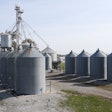
The best preparation for an inspection by an officer of the U.S. Food and Drug Administration (FDA) is familiarity with the Food Safety Modernization Act (FSMA), said Paul Davis, director of quality, animal food safety and education for the American Feed Industry Association (AFIA).
Davis spoke at the USPOULTRY Feed Mill Management Seminar in Nashville, Tennessee, and explained what should be done before, during and after an inspection.
Before the inspection
- Always be prepared. The FDA has the authority to come in unannounced, as long as the facility is open for business.
- Be thoroughly familiar with the regulations, what you are required to do and what FDA can do.
- Decide who is the designated employee(s) to accompany the inspector.
- Be familiar with your company policies regarding what documents can be signed, what can be shown to an inspector, photography and document copying.
- Develop corporate policies on how to handle FDA inspections. These policies should be regularly reviewed by senior management, legal counsel and local management staff. Consider a policy that prohibits photography and videotaping without corporate approval. For safety reasons, only allow explosion-proof cameras and flash equipment. FDA’s policy states that investigators should not take photos except to document an issue; if an inspector takes a photo, the facility employee should take a duplicate photo. Regarding documents, establish in your policy what FDA can see and require exceptions to obtain corporate approval. Mark “confidential” on proprietary documents.
During the inspection
- Always be professional, honest, cooperative, respectful and calm, but also be on guard.
- Notify corporate management when an investigator arrives.
- Ask for appropriate identification from the investigator.
- Receive an FDA Form 482 – Notice of Inspection.
- Be aware that you should not be expected to interrupt production.
- If an investigator collects a sample, you should collect two duplicate samples and ask for an FDA Form 484 – Receipt of Samples.
- Make sure the investigator is aware of company safety procedures and insist they are followed.
- Don’t answer any questions or show anything you’re unsure about without consulting management. If you don’t know the answer to a question, say so.
- At the exit conference, inform the investigator of corrective actions taken; ask the investigator about any areas of concern; have legal counsel review all affidavits before signing; point out any factual mistakes without arguing with the inspector; remember that lying to a federal officer is a felony.
After the inspection
- Prepare and submit a report to management including appropriate details and documentation provided by the investigator.
- Respond in writing to any FDA Form 483s or Warning Letters issued. Ask for assistance from AFIA if needed and coordinate your response with corporate management and legal counsel.
Animal Feed manufacturers adapting to meet FSMA
U.S. animal feed manufactures are adjusting to the “new normal” to comply with new FSMA regulations, said Gary Huddleston, director of feed manufacturing and regulatory affairs, AFIA at 2019 International Production & Processing Expo. All feed mill employees must be trained to FSMA standards as well as have a preventative control person who can design a food safety plan and perform a hazard analysis.

















